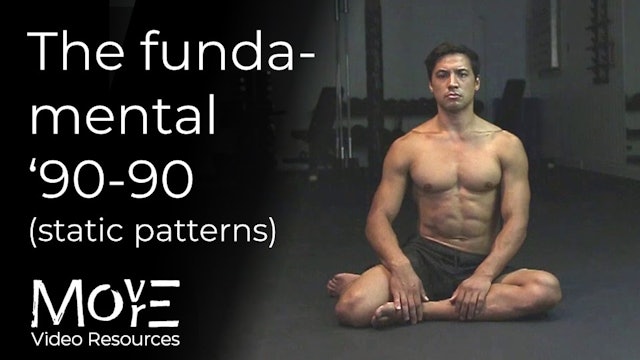Floor-contact locomotion & transitions
In order to develop an interconnected & usable vocabulary of floor-contact locomotion, further to the availability of floor-entrance & floor-exit (FEN/FEX) patterns the attention necessarily shifts to developing movement optionality once the practitioner is on the floor. Quite simply, we begin with the practice of moving THROUGH space, as opposed to being more “fixed” IN space, as can generally be said for FEN/FEX patterns (in looking toward integrating, however, this ultimately develops toward becoming a SINGULAR, seamless event as energy from one movement feeds directly into & affects the next).
This area of practice can be loosely termed “floorwork”, although FEN/FEX patterns would also connect with this description. Setting them apart, however, highlights that when entering/exiting the floor you do so FROM and TO somewhere, which can also be a DIFFERENT level in space (e.g. from standing, squatting, kneeling…). This keeps the mind & optionality of the practitioner open; rather than seeing “floorwork” as something of an independent subject within the greater movement aspect of “floor-communication”, it is simply another level in space with the potential to interact & move within. ’90-90’ patterns have also been included in this collection of projects as they ultimately develop into a system of SITTING-based locomotion, which traverses between the world of sitting & kneeling.
LEARN MORE (subscriber-only):
https://drive.google.com/file/d/1Hki1Ue-9sHkYyt2NHplOTSI8kKTKSiJ6/view?usp=drive_link
-
The Fundamental ’90-90’ (static patterns)
THE WHAT:
The ’90-90’ is essentially a common floor-seated position in which the bodyweight is shifted more unilaterally into one side of the hips, the shins forming a more-or-less square form at a 90-degrees angle.When available, it serves as a fundamental ‘zero-point’ through which high trans...
-
Seated pike to prone (& back)
THE WHAT & HOW:
A charming little context which "maps" both the anterior & posterior "circle of the hips", or, rather, the full-circle. It comes from the perspective of "circles of the body", by which we can use them, just like wheels, to move both in and through space.In oder to place it withi...
-
The 'Travelling A & B'
THE WHAT & HOW:
The 'Travelling A & B' makes use of experience built with static '90-90' variations & transitions, connecting them in cyclical patterns to take the body locomoting through space in floor-contact. As such, they play between the worlds of seated (floor-contact) and kneeling, the lat... -
Prone quadruped to lateral floor-roll
THE WHAT:
A transitional pattern facilitating movement in and out of the floor from a quadruped position to floor-contact. The main work here is developing the structural awareness & patterning (notably the “folding” of the arm to bring the body closer to and enter the floor and coordination of t... -
Seated open-hip lateral floor roll
Resource contents:
0:04 - Open hip-roll enter & exit
0:45 - Closed-chain sequence (CCS) open-hip rollTHE WHAT & HOW:
A fundamental floor-entrance & exit pattern complete with a locomotive phase injected between, the body passing through prone position as it rolls across the anterior “circle of ... -
'Circle of the neck/shoulders'
THE WHAT:
Whilst also a strength ("core") and mobility (neck & posterior-chain) development frame, ultimately these capacities develop within the practice of a fundamental floor-contact transitional movement (i.e. negotiating the head/neck against the floor as the feet/hands remain ANCHORED).It...
-
Lateral floor-roll variations 1: Hollow body
THE WHAT:
Floor-contact lateral rolls generally carry the intention of “softening” and “melting” into the floor, an emphasis on the “ironing out” of “bumps” & “creases” toward an aesthetic of effortlessness, and are “driven” by the legs in their cyclical, piston-like pushing against the floor. Th... -
Travelling ‘Helicopter-roll’
THE WHAT:
The ‘Travelling helicopter-roll’ is a locomotive floor-contact pattern which essentially integrated the fundamental ‘Helicopter floor-entrance/exit’ pattern with the ‘Open-hip lateral floor-roll’. They are linked together in cyclical combination, the only addition being a “whip” of the ... -
'Pendulum roll' & 'Shoulder Role' progressions
*Review webinar notes here: https://www.youtube.com/watch?v=O5-X1xnd0iw&t=7933s
THE WHAT & HOW:
The ‘Pendulum roll’ (so named after the pendular action of the top, sweeping leg which is accompanied by the same action of the same-side arm) explores the potential to INVERT the body in floor-contac... -
Fundamental 'Lateral floor-roll'
THE WHAT:
A most fundamental floor-contact locomotion pattern which displaces the body at the lowest of the possible levels in space. It allows for lateral rolling (left/right) along the ‘circle of the ribs’, and is ‘driven’ by the action of legs extending and flexing (and ultimately PUSHING) aga... -
'Neck loading' & foot/shoulder "anchors"
THE WHAT:
A fundamental floor-contact concept which allows for displacement of the body in space in relation to shoulder and foot "anchors". In its combination of stepping and rolling, the context marries both OPEN kinetic-chain (extremities moving in relation to body) and CLOSED kinetic-chain (b... -
Arm-tucked lateral roll
THE WHAT:
A variation of the fundamental ‘lateral roll’ which makes use of the same floor-contact “pedal” mechanics to “drive from the legs”. The distinct & characteristic difference, however, being that whilst the former creates a ‘circle of the RIB-CAGE’ around which to roll, facilitated by the...














